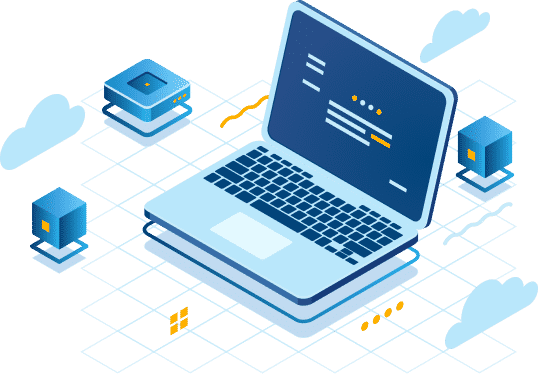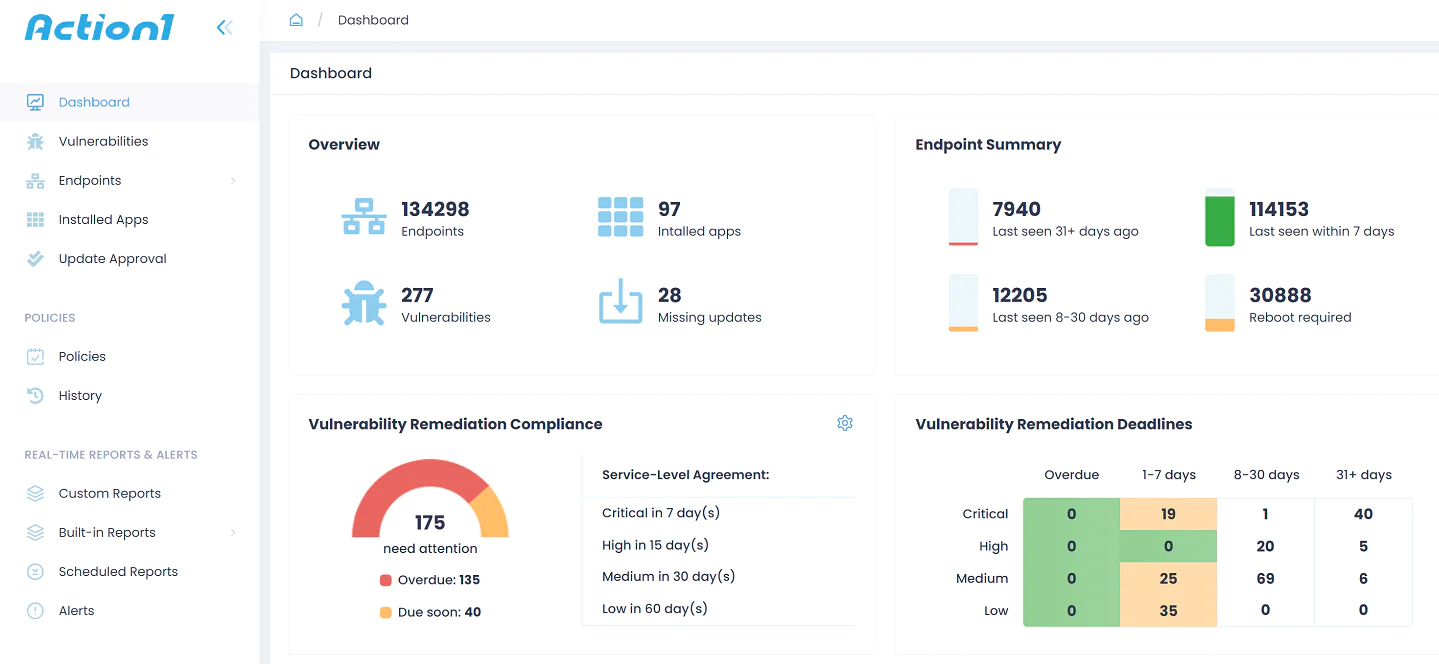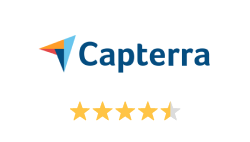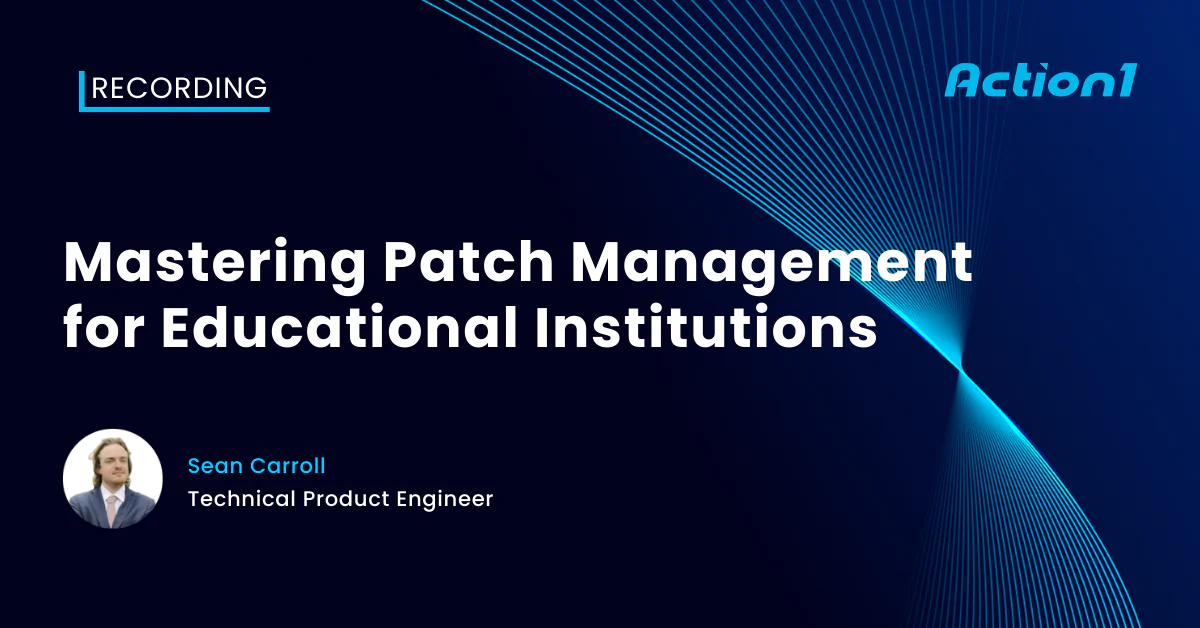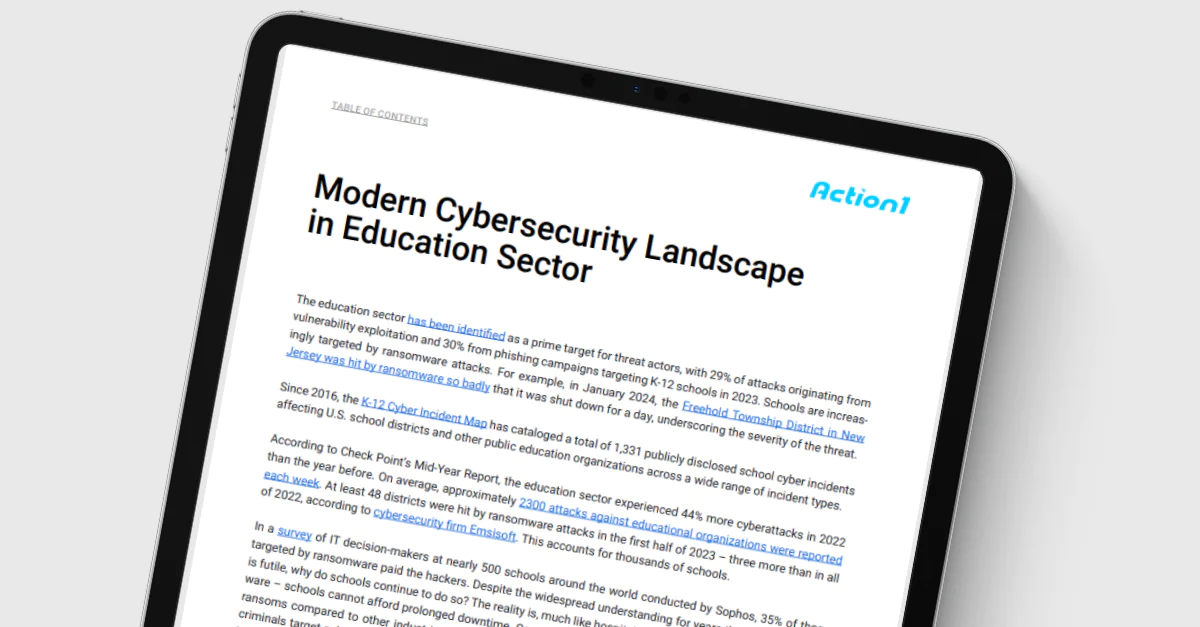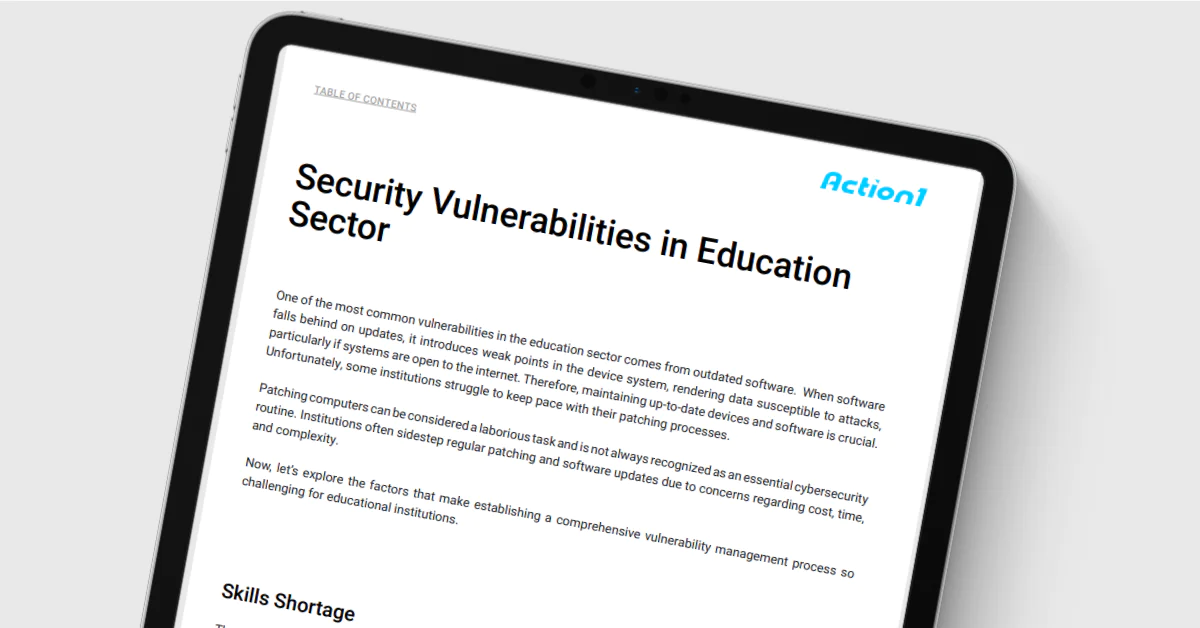Patch Management for Education
Real-time discovery and remediation of third-party and OS vulnerabilities, VPN-free
“Just knowing how prevalent ransomware is now and understanding that we’ve mitigated this risk by properly patching our third-party applications through Action1 is a huge relief for us.
Johnathan Kim, Director of Technology at the Woodland Hills School District.
Action1 is trusted by
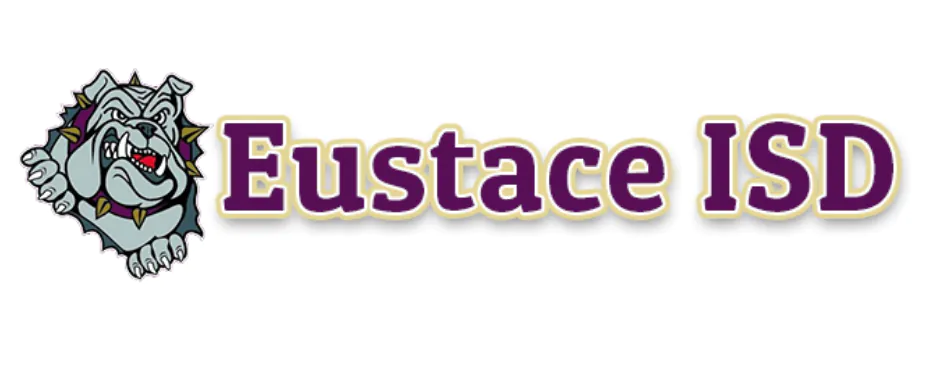


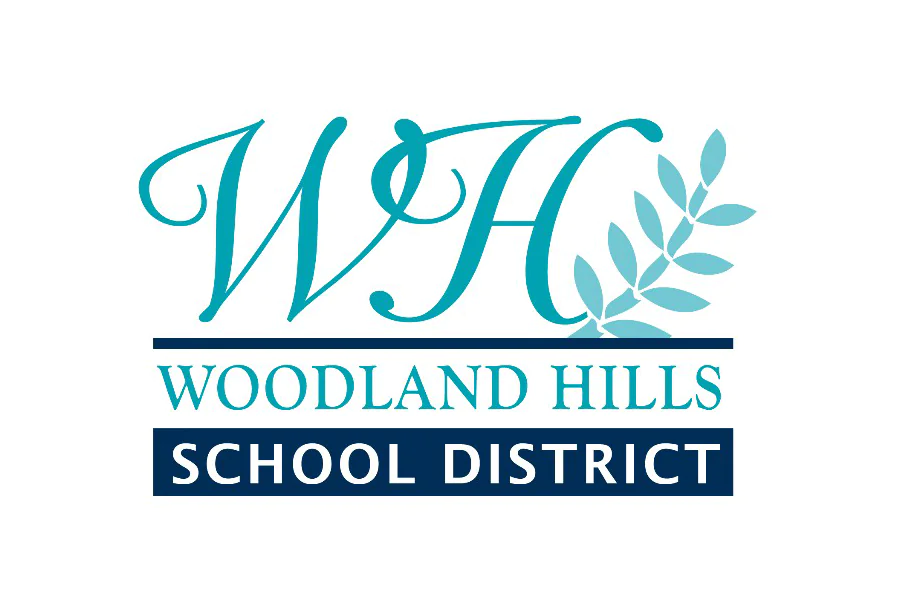
Recorded Webinar: Mastering Patch Management for Secure Educational Institutions
Discover the keys to streamlined patch management in our recorded webinar. Explore common challenges, learn how to overcome them, and witness real-world success stories tailored for educational IT administrators. Don’t miss this opportunity to optimize your institution’s cybersecurity strategy.
eBook: Addressing Security Vulnerabilities in Small Educational Institutions
Small educational entities grapple with cybersecurity amid technology’s rise and the shift to online learning. The increase in devices and specialized apps complicates safeguarding efforts. This eBook guides small schools and community colleges in enhancing cybersecurity and managing vulnerabilities effectively.
eBook: Mitigating Cybersecurity Vulnerabilities in the Education Sector
Educational institutions confront escalating cybersecurity issues with technological growth and expanded remote learning. The surge in endpoints and specific apps intensifies security challenges. Our eBook provides strategies for robust cybersecurity and vulnerability management across educational settings.
Patching That Just Works for Secure Educational Environments
Enhance your defense against cyber threats, safeguard educational operations, and mitigate potential impact of cyberattacks on local communities with Action1:
Third-Party Patching
Automate patching of numerous software and OS titles with real-time progress status, even if your endpoints are offline.
Software Repository
Private software repository maintained by in-house security team. Includes 99% patching coverage for most enterprise environments.
Real-Time Visibility
Instant visibility into endpoint vulnerabilities, without the need for periodic scans. Live dashboard for monitoring SLA-based patch compliance.
Vulnerability Remediation
Identify all vulnerable software and OS installed on endpoints in real-time. Leverage built-in vulnerability remediation in a single solution.
P2P Distribution
Minimize external bandwidth usage and ensure rapid deployment of large updates without any on-prem cache servers.
Enterprise Integrations
Integrate Action1 with Active Directory, Entra ID, Okta, Duo, and Google. More integrations are available via REST API or PowerShell scripting.
Frequently Asked Questions
Why is patch management important for the education industry?
Patch management is crucial for the education industry because it helps protect sensitive data, maintain system functionality, and ensure compliance with security regulations. Schools, universities, and educational institutions handle large amounts of personal data, including student records, financial information, and research materials. Without timely updates, outdated software may have vulnerabilities that could be exploited by cybercriminals, leading to data breaches or ransomware attacks. Since educational institutions often use a wide variety of software and operating systems, it’s essential to keep them updated to avoid security risks. Additionally, with the growing reliance on online platforms and remote learning, keeping all systems secure and functional is vital for uninterrupted operations. Regular patching ensures that security flaws are corrected before they can be exploited, safeguarding the integrity of the educational infrastructure.
What are the most common vulnerabilities in the education sector?
The education sector is commonly targeted by cyber threats due to the valuable data it holds and the often-underfunded security measures. Some of the most common vulnerabilities include outdated software, unpatched operating systems, and weak access controls. Educational institutions tend to use a variety of legacy systems, which may lack support for the latest security patches. Phishing attacks targeting staff and students are also widespread, as users may be unaware of security risks. Additionally, unsecured network configurations, particularly for Wi-Fi, and weak passwords make it easier for attackers to gain unauthorized access. Insufficient cybersecurity awareness and training among staff and students further expose the education sector to potential vulnerabilities.
How does Action1 help with educational industry patch management?
Action1 offers a cloud-based solution for automating patch management, helping educational institutions keep their systems secure without the need for extensive on-site infrastructure. It simplifies the process of identifying and deploying necessary updates across a wide variety of devices, ensuring that security vulnerabilities are addressed quickly. Action1 provides centralized visibility and control over patching operations, which is especially useful for schools and universities with distributed networks and remote learners. Its automated patching reduces the workload on IT staff, allowing them to focus on other important tasks. The platform also ensures compliance with security standards and minimizes the risk of cyberattacks by keeping systems consistently updated.
